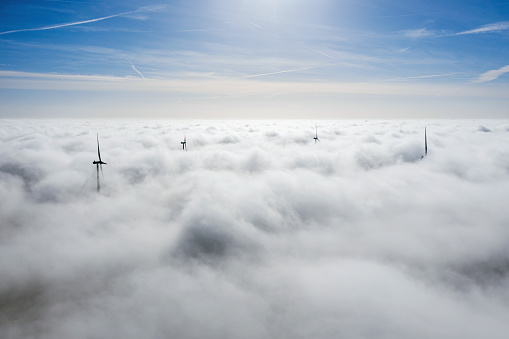
As a prominent alternative energy resource, wind energy has gained substantial global recognition as we strive to lessen our dependence on nonrenewable energy sources. Wind farms, installed across large land areas or positioned offshore, employ numerous wind turbines to harness the wind’s kinetic power, converting it into usable electrical energy. This transformation plays a significant role in supplying electricity on a global scale.
The often-underestimated wind energy cables are at the core of these complex wind turbine networks. These crucial components link various parts of a wind farm, enabling the turbines to function efficiently and facilitating the smooth transmission of power to the grid. These cables need to embody a series of characteristics to guarantee reliable operation under challenging and often harsh wind farm conditions.
Essential Characteristics of Wind Farm Cables
The specific environment of wind farms demands unique attributes from the cables used. First and foremost, wind energy cables must resist sunlight degradation. Given the intense and continual exposure to sunlight in open fields or offshore environments, cables without UV resistance can rapidly deteriorate, leading to reduced efficiency and potential system failures.
Flame resistance is also of the essence. With high voltages involved in wind energy production, the risk of electrical fires is real. Flame-resistant cables can help prevent the spread of fire, adding a layer of safety to the wind farm.
Moreover, wind energy cables need to withstand extreme temperatures. Wind farms are often located in regions subject to severe temperature fluctuations. Whether facing the intense heat of a desert or the freezing offshore winds, these cables must perform reliably.
Lastly, these cables must withstand abrasion and mechanical stress. The continual vibration of turbines and potential rough handling during installation necessitate durable and robust cables.
A Closer Look at Types of Industrial Cables Used in Wind Farms
Wind farms utilize several types of industrial cables, each serving a specific function. These include bare copper, battery, communication, custom harnesses, and tray cables.
Bare copper cables, recognized for their excellent conductivity and corrosion resistance, are often used for grounding purposes. They ensure the safe dissipation of electrical energy, safeguarding both equipment and personnel from electrical hazards.
Battery cables are integral to the energy storage systems of wind farms, transmitting the power generated by the turbines to the storage units and back to the grid when needed. These cables are designed to handle high current loads and are resistant to heat, oil, and acid.
Communication cables are crucial for data transfer within the wind farm, transmitting vital operational data from the turbines to the control center and vice versa. Engineered for high-speed, reliable data transfer, these cables actively facilitate real-time monitoring and control of turbine performance.
Custom harnesses, tailored to meet specific requirements, help simplify installations, reduce labor costs, and improve system organization and aesthetics. They are pre-assembled with all necessary interconnections, allowing for a plug-and-play solution that enhances efficiency.
Tray cables, designed to endure the demanding conditions of wind farms, actively connect the turbines to the main power grid. These robust cables ensure reliable power transmission across a diverse range of environmental conditions.
Conclusion
In conclusion, wind energy is a monumental stride in the global effort to combat climate change as a renewable and sustainable energy source. The role of specialized cables, with their precise characteristics and applications, is instrumental in this endeavor. By understanding their functions and importance, we can fully appreciate the complex process of harnessing wind power and the intricate technologies that make it feasible.

